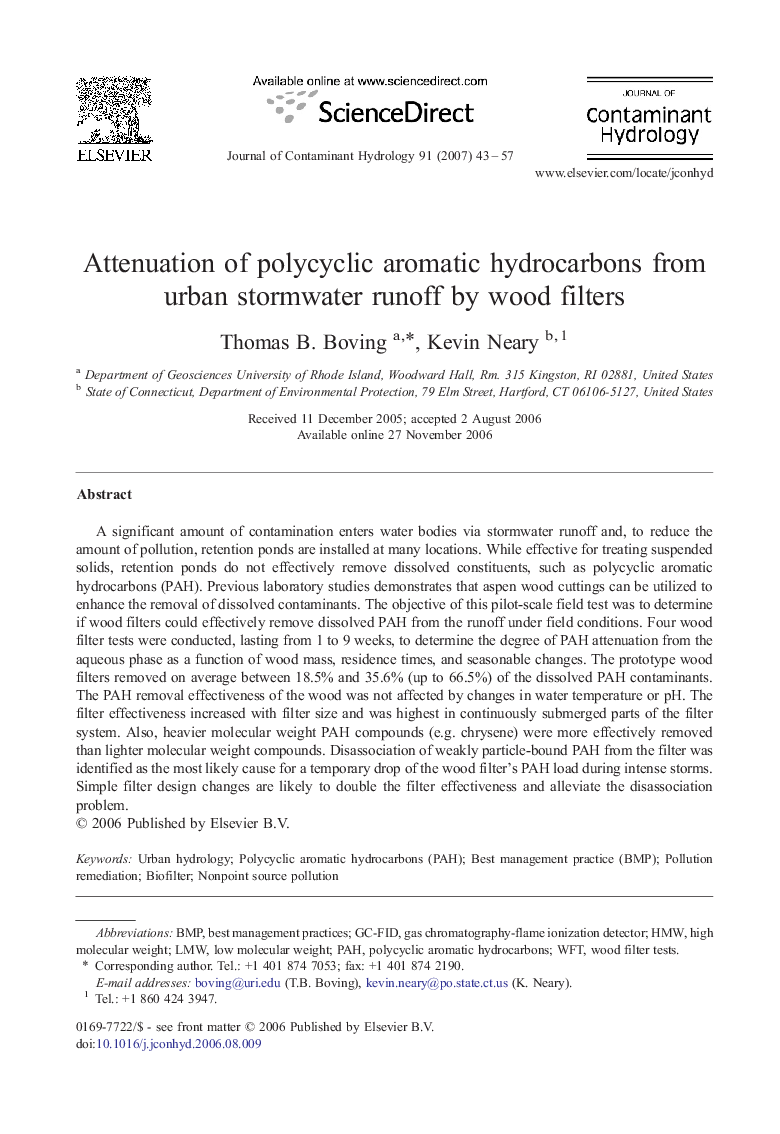| Article ID | Journal | Published Year | Pages | File Type |
|---|---|---|---|---|
| 4547595 | Journal of Contaminant Hydrology | 2007 | 15 Pages |
A significant amount of contamination enters water bodies via stormwater runoff and, to reduce the amount of pollution, retention ponds are installed at many locations. While effective for treating suspended solids, retention ponds do not effectively remove dissolved constituents, such as polycyclic aromatic hydrocarbons (PAH). Previous laboratory studies demonstrates that aspen wood cuttings can be utilized to enhance the removal of dissolved contaminants. The objective of this pilot-scale field test was to determine if wood filters could effectively remove dissolved PAH from the runoff under field conditions. Four wood filter tests were conducted, lasting from 1 to 9 weeks, to determine the degree of PAH attenuation from the aqueous phase as a function of wood mass, residence times, and seasonable changes. The prototype wood filters removed on average between 18.5% and 35.6% (up to 66.5%) of the dissolved PAH contaminants. The PAH removal effectiveness of the wood was not affected by changes in water temperature or pH. The filter effectiveness increased with filter size and was highest in continuously submerged parts of the filter system. Also, heavier molecular weight PAH compounds (e.g. chrysene) were more effectively removed than lighter molecular weight compounds. Disassociation of weakly particle-bound PAH from the filter was identified as the most likely cause for a temporary drop of the wood filter's PAH load during intense storms. Simple filter design changes are likely to double the filter effectiveness and alleviate the disassociation problem.
